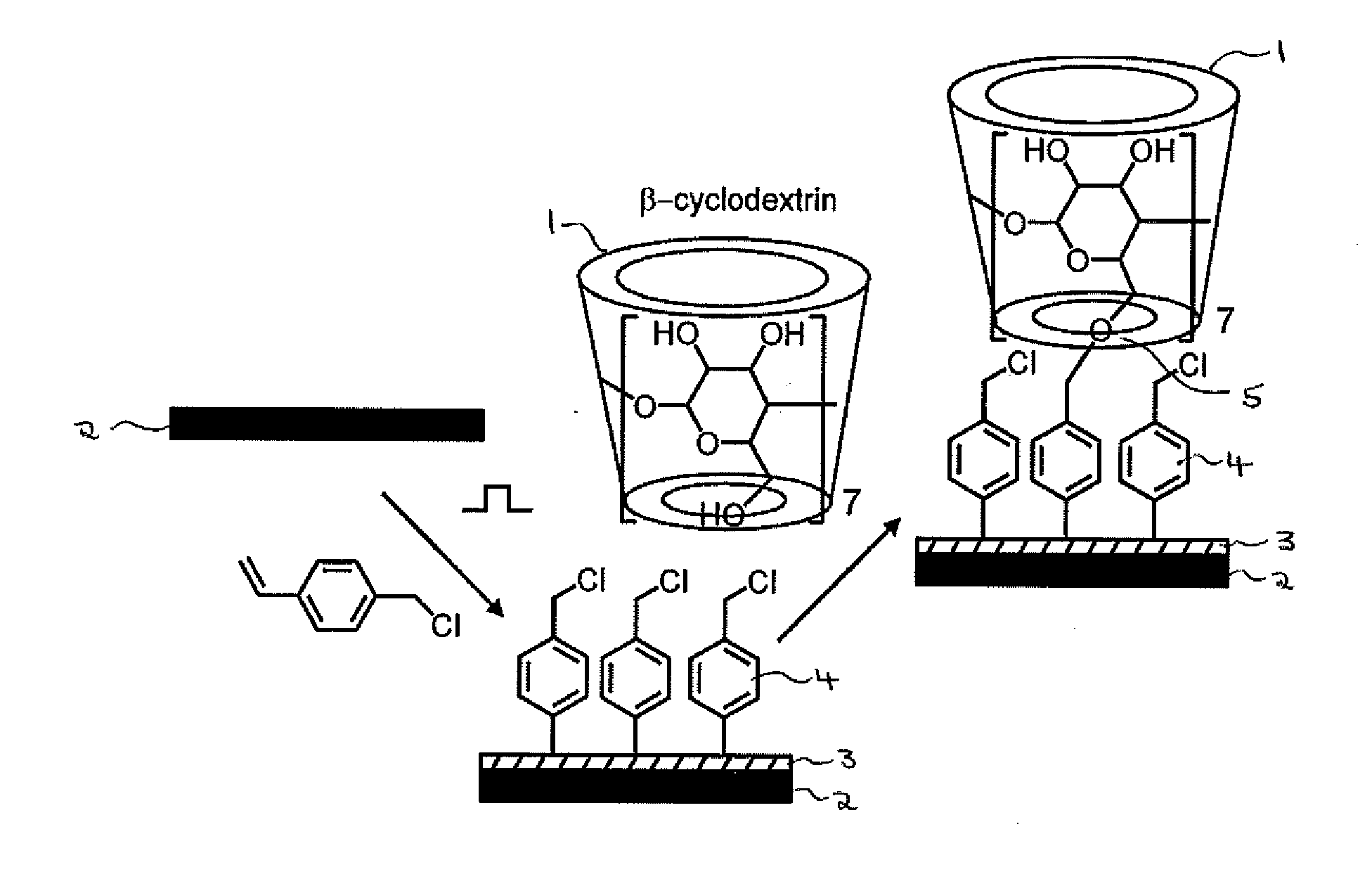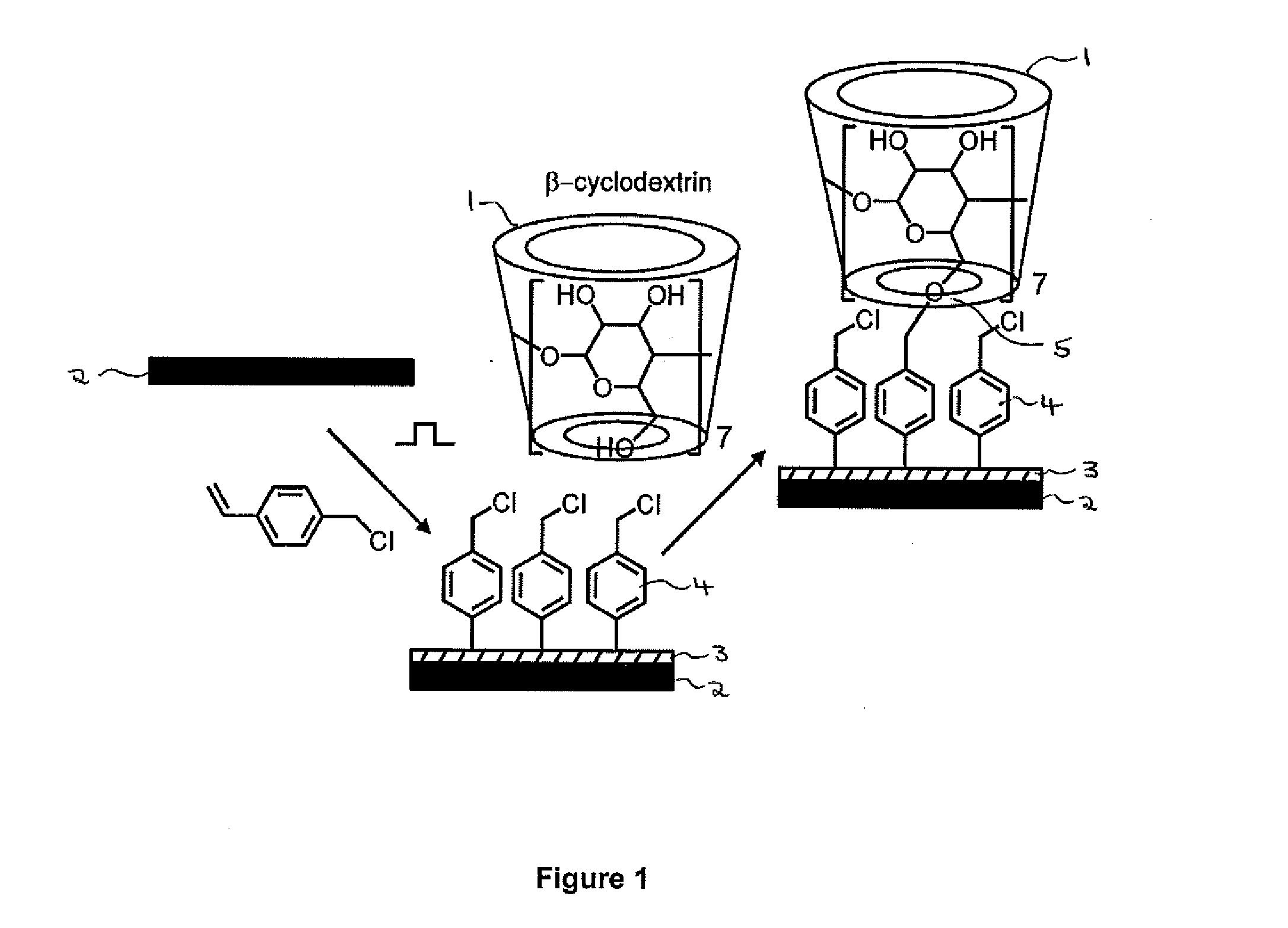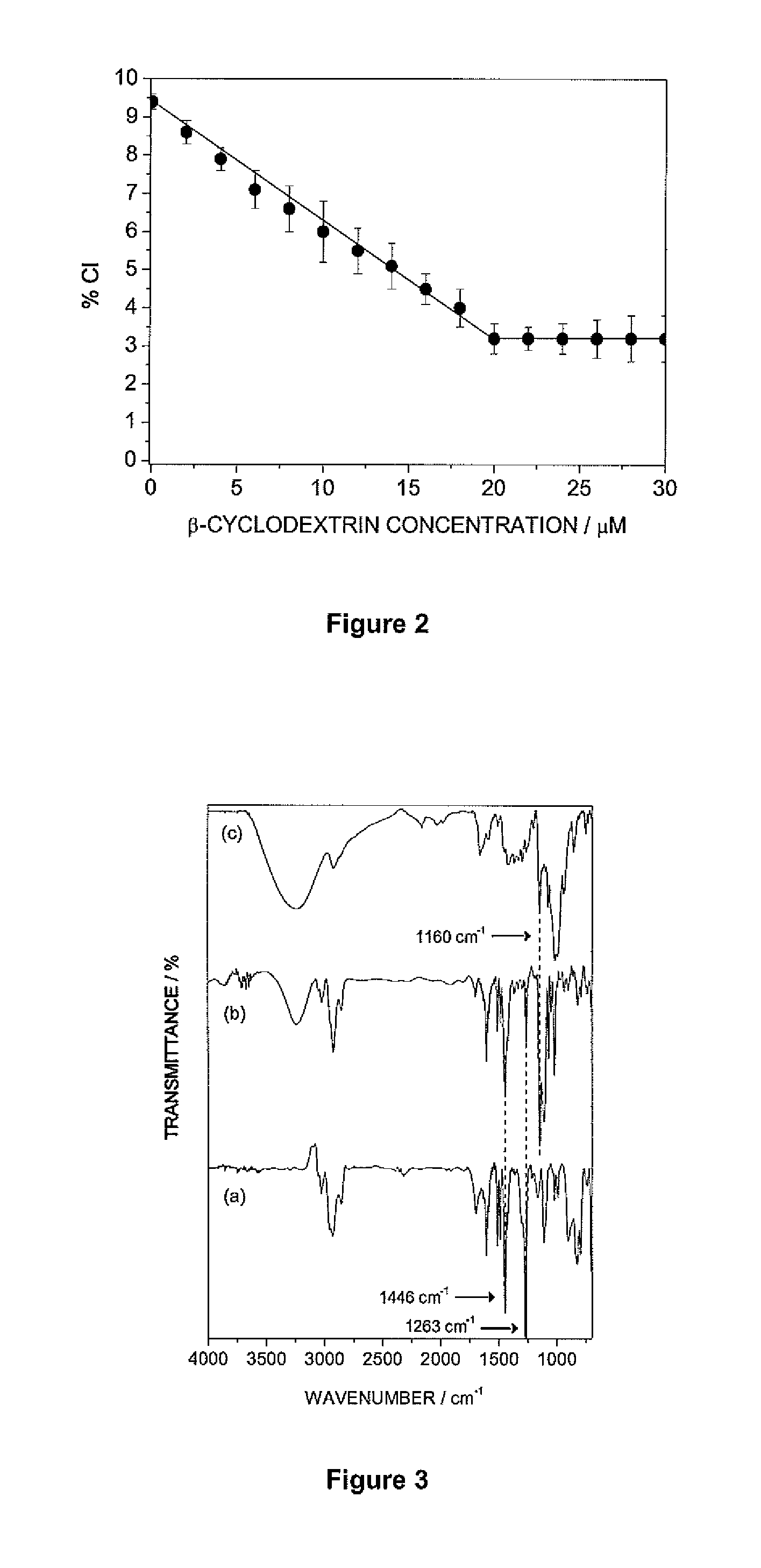Product
a technology of active substances and substrates, applied in the field of products, can solve the problems of limited success of approaches, inadequate functional retention capacity, and limit the techniques used to deposit polymers, in particular for sensitive active substances, and achieve the effect of facilitating the loading of active substances
- Summary
- Abstract
- Description
- Claims
- Application Information
AI Technical Summary
Benefits of technology
Problems solved by technology
Method used
Image
Examples
example 1
1 Experimental
[0098]Pulsed plasma deposition of 4-vinylbenzyl chloride (+98%, Aldrich, purified using several freeze-pump-thaw cycles) was carried out in an electrodeless cylindrical glass reactor (5 cm diameter, 520 cm3 volume, base pressure of 1×10−3 mbar, and with a leak rate better than 1.8×10−9 kg s−1) enclosed in a Faraday cage. The chamber was fitted with a gas inlet, a Pirani pressure gauge, a 30 L min−1 two-stage rotary pump attached to a liquid cold trap, and an externally wound copper coil (4 mm diameter, 9 turns, spanning 8-15 cm from the precursor inlet). All joints were grease free.
[0099]An L-C network was used to match the output impedance of a 13.56 MHz radio frequency (RF) power generator to the partially ionised gas load. The RF power supply was triggered by a signal generator and the pulse shape monitored with an oscilloscope. Prior to each experiment, the reactor chamber was cleaned by scrubbing with detergent and rinsing in water and propan-2-ol, followed by ove...
example 2
1 Experimental
[0119]Inclusion complexes were prepared between (a) several well known essential oils (lavender, sandalwood, jasmine, rosemary, lemon and vanilla, The Body Shop Co Ltd) and (b) 20 μM β-cyclodextrin-functionalised pulsed plasma deposited poly(4-vinylbenzyl chloride) on non-woven polypropylene cloth, prepared as in Example 1. The complexes were made by exposing the functionalised polymer-coated cloth to a 75 mM ethanolic solution of the relevant oil for 72 hours. Subsequent washing with ethanol and propan-2-ol, followed by drying at 35° C. for 60 minutes, removed any unbound guest molecules. Essential oil guest molecule loading concentrations were calculated by extraction with an ethanol / water (50:50 v / v) mixture for 12 hours followed by UV-vis absorption spectroscopy measurement at a wavelength of 276 nm (absorption maxima for all essential oils studied) at regular time intervals.
[0120]Aroma activities of the freshly charged inclusion complexes were evaluated by sensory...
PUM
| Property | Measurement | Unit |
|---|---|---|
| temperature | aaaaa | aaaaa |
| temperature | aaaaa | aaaaa |
| temperature | aaaaa | aaaaa |
Abstract
Description
Claims
Application Information
 Login to View More
Login to View More - R&D
- Intellectual Property
- Life Sciences
- Materials
- Tech Scout
- Unparalleled Data Quality
- Higher Quality Content
- 60% Fewer Hallucinations
Browse by: Latest US Patents, China's latest patents, Technical Efficacy Thesaurus, Application Domain, Technology Topic, Popular Technical Reports.
© 2025 PatSnap. All rights reserved.Legal|Privacy policy|Modern Slavery Act Transparency Statement|Sitemap|About US| Contact US: help@patsnap.com



